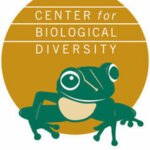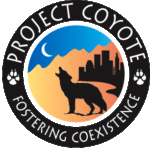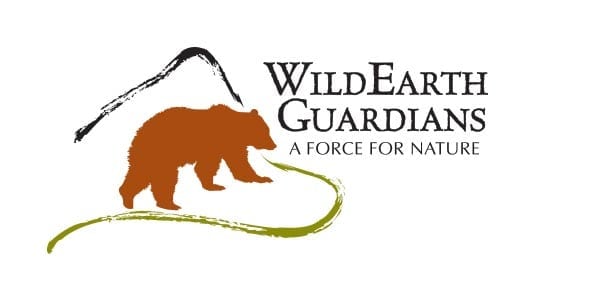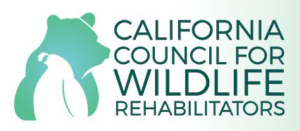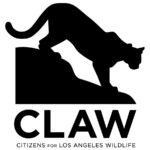With the knowledge and understanding of the overlapping needs and benefits for humans, animals, and plants, this nonprofit works to maintain our planet’s diversity. The Center of Biological Diversity’s goal is to protect all aspects of nature so our world may be flourishing as the responsibility to preserve it is passed to the next generation.
Armed with scientific evidence, legislature, and mechanisms of outreach, such as newsletters and published analyses, the Center has gained immense territory coverage extending across the country, the Pacific and Atlantic Oceans, and even internationally. Their most powerful tool: legal action. 83% of lawsuits the Center has been involved it were won by them, leading to the elimination of harmful proposals and enactment of ones which protect species.
An elemental focus of the Center for Biological Diversity is the protection of endangered species. Using a significant portion of their resources allows the Center to maintain awareness of the state of species which are dying off. They fight to reverse these effects by providing these animals with an optimal habitat to regrow their populations.
Conserving our world’s natural habitats is also at the top of the organization’s agenda. They are constantly working to ensure public lands stay public and free of human development. This allows for plants and animals to thrive in the ecosystems in which they were made to. Laws and legislature have forced wildlife out of their homes into unfamiliar areas where they are less likely to survive. Over the past 30 years, the Center has fought to secure designated untouchable areas to preserve habitats for threatened species.
Two of many other goals the Center for Biological Diversity is devoted to include reducing climate change and keeping a keen eye of US activity in international wildlife affairs. The Center is constantly looking for new ways to positively impact our world by preserving the life within.
This non-profit organization uses education, advocacy/ outreach, and science to promote coexistence of predators and human life within an ecosystem. Their key mission is to find nonlethal solutions to improve the lives of apex, or alpha, predators, as well as humans who encounter them. It utilizes 6 branches, or programs, to catapult their mission.
The first, the “Reforming Predator Management” project is focused on working with USDA Wildlife Services and other governmental bodies to develop legislature which eliminates unethical hunting of these predators and provides them with a safe haven, where they are protected.
Project Coyote recognizes many predators are slaughtered by disgruntled ranchers whose livestock have been killed by them. The second program, “Ranching with Wildlife,” is orchestrated to bring awareness to ranchers of the limited impact predators realistically have on their livestock; weather conditions, disease, and natural birthing conditions being more prominent. This program does, however, work alongside ranchers to engineer safe enclosures to keep livestock from coming in contact with the wildlife.
Ranchers aren’t the only ones affected by coyotes and other predators. Human communities and habitats for predators overlap and interactions of the two are not rare. The “Coyote Friendly Communities™” initiative focuses on educating individuals on the consequences of invading the homes of wildlife and how to coexist when they wander into urban and rural areas.
The Science Advisory board observes carnivores in the wild to generate ideas of how to best conserve and protect these animals, while preserving the environment, within the “Science & Stewardship” project.
“Keeping it Wild” is the program which pursues educating children, the up and coming generation, who have their chance to make an impact, on the importance of these predators within our world. Project Coyote works with teachers to encourage students to ask questions, explore scientific boundaries, and get involved in the movement.
The sixth and final sphere of Project Coyote is coined “Artists for Wild Nature.” Partnering with artists of all mediums, the organization displays public pieces of art to bring awareness to the beauty of coexistence.
This April they celebrated their 10th year anniversary with a Benefit Gala including both a live and silent auction to raise funds.
Respect for our world and the life within it is at the heart of this nonprofit. Focusing on the Western Region of North America, this organization fights for the “voiceless wildlife” and the places they live. Their 4 core causes are protecting wildlife, rivers, and public places, as well as bringing awareness to energy sources which damage our climate.
As advocates for life who cannot speak for themselves, a large part of WildEarth’s work is to keep public land away from the hands of those who wish to privatize and develop on it. They challenge any exchanges of land which undermine the interests of the public and are detrimental to the Guardians’ efforts to preserve nature. Maintaining transparency of all trades prevents politicians and privatizers from conducting shady deals which benefit only their interests.
Preserving public lands are vital in the conservation of the other 3 causes supported by WildEarth Guardians. Rivers sustain all life and sustaining those which are still flowing is crucial. The board fights for policies which limit the usage of freshwater from Western Rivers and works with scientists to optimize this usage. Recently the nonprofit has been focused on moving water storage on the Rio Grande Upstream to alternate reservoirs which limit evaporation and benefit wildlife and human life accessibility.
Implementing a forward thinking mindset, the board of WildEarth promotes clean energy rather than cheap fossil fuels which damage the climate and disproportionately benefit multi billion dollar companies. The Guardian’s emphasis is on giving power to the people to stand up for a radical switch to renewable energy through fighting to keep public places, public.
In addition to promoting positive health for human life, WildEarth Guardians strongly combats persecution of endangered species. Backed by the Endangered Species Act, the organization files lawsuits against any illegal action putting wild animals in harm's way. They are devoted to utilizing powerful scientific evidence to strengthen their decisions.
The foundation began as a coalition in 1986, formed 15 years after Ronald Reagan signed legislation which temporarily banned sport hunting of lions for 5 years. In 1987, the coalition was approved for nonprofit status and the tension grew between it and the California Fish and Game Commision. Primarily, the foundation works to conserve the habitats and lives of mountain lions across the US.
Mountain Lion Foundation encourages citizens to learn of the importance of these apex predators in preserving ecosystems. Lions manage the grazing of deer and elk by instilling fear encouraging them to migrate. Scientific studies have proven areas with mountain lions contain richer soil and better resources.
Education is necessary when promoting this controversial topic. A plethora of Americans assume killing lions is crucial to prevent overpopulation, when in reality, the lions are already self regulating their own population sizes.
In addition to working for the lions, the foundation works with the community to remove stigmas around the ferocity of these predators and embrace coexistence.
Rooted in the concern of unethical, unsuccessful rehabilitation for injured wildlife, the California Council was formed by a group of passionate rehabilitators in 1993. The group of ever growing Wildlife enthusiasts work to advance rehabilitation techniques as well as promote their forward thinking, solution oriented values to individuals outside of the Wildlife Rehabilitation sphere. It is an outlet for facilities to receive training, guidance, and support as they care for animals. A page has been uploaded to their website where individuals may post about
Utilizing donations from individuals, sponsors, as well as membership fees, the Council offers trainings, hosts an annual symposium, and provides resources to educate all of California on supporting animals living in the wild in California. Additionally, a portion of their funds are invested in their organization by providing internship and job opportunities across the state.
As a member, one can network with hundreds of other rehabilitators, receive quarterly newsletters, invitations to events, and access to restricted information beneficial to the advancement of rehabilitation.
The Citizens for Los Angeles Wildlife advocates and promoted state bills which furthers wildlife protection. The organization understands as new scientific studies uncover realities of animal endangerment, new legislation should be implemented. A current one, garnering much support from wildlife advocates, is titled AB 1788, which if passed, will ban rat poison in California. In just a few months, the bill has already passed through 3 committees and the state assembly voted in favor of it (49-16), so it is now headed to state senate.
Although the poison effectively eliminates rats, it also has a toll on predators of the rats. The rodenticide does not immediately kill a rat when the poison is consumed. Instead, the rat becomes lethargic and is slow enough for predators to easily target. The rat poison which was in the rat is now in the predator as well. The poison is not strong enough to kill a larger animal, however it attacks its immune system, weakening the animal. This epidemic plagues 29 species in California alone.
CLAW has already successfully banned a higher degree of rat poison and hopes to completely eliminate it by spreading the word about the benefits of bill AB 1788.

